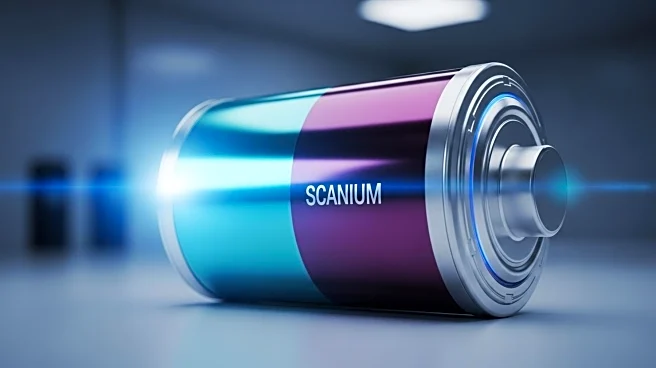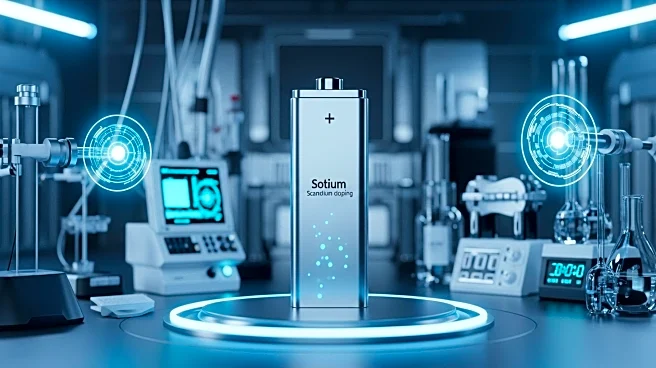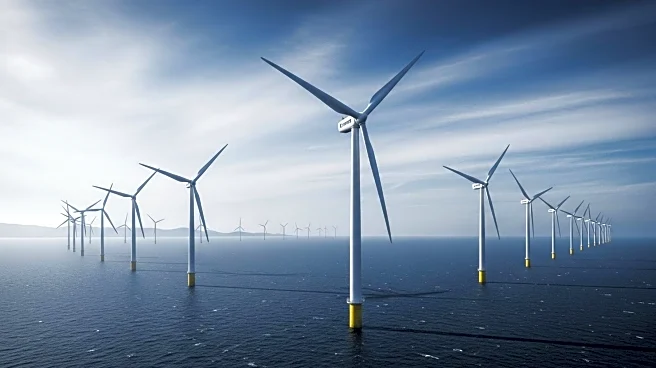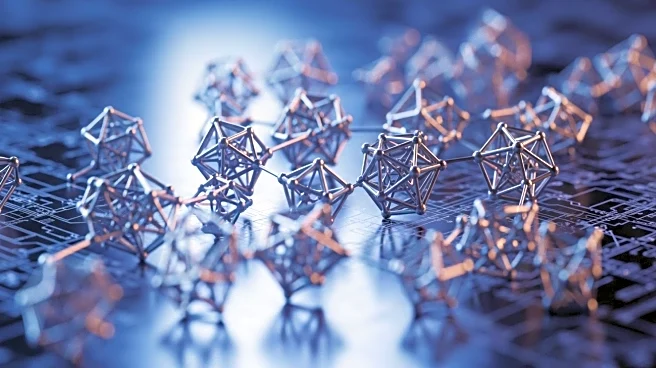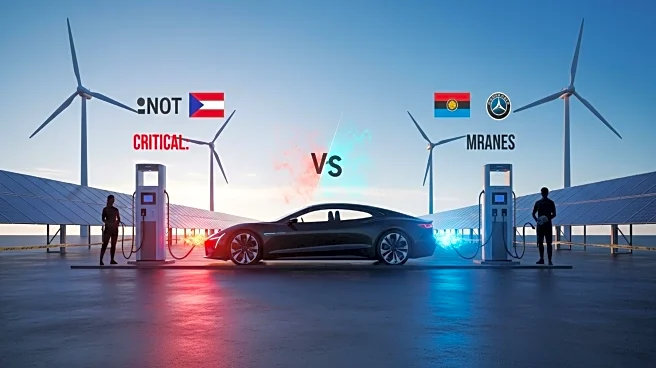What's Happening?
Researchers from Tokyo University of Science have successfully observed a unique phase of water known as the 'premelting state,' where water behaves as if it is simultaneously freezing and melting. This discovery was made using static solid-state deuterium nuclear magnetic resonance (NMR) spectroscopy to study water confined within nanopores of a molecular crystal. The study, published in the Journal of the American Chemical Society, reveals a hierarchical, three-layered structure of water molecules, providing insights into the dynamics of confined water. The findings could have significant implications for understanding water's behavior in biological systems and developing new materials.
Why It's Important?
The discovery of the premelting state of water could lead to advancements in material science, particularly in the development of water-based materials and artificial gas hydrates. Understanding the behavior of water in extreme confinement is crucial for applications in biological systems, such as ion transport through cell membranes. The ability to manipulate water's freezing properties could enable the storage of energetic gases like hydrogen and methane, offering potential for new, safe, and inexpensive hydrosphere materials. This research highlights the ongoing importance of studying water, a fundamental substance with many secrets yet to be uncovered.
What's Next?
Future research may focus on exploring the practical applications of the premelting state in material science and technology. Scientists could investigate how these findings can be applied to create new ice network structures for energy storage or develop innovative water-based materials. Additionally, further studies might delve into the implications for biological systems, enhancing our understanding of water and ion transport through proteins and membranes. The insights gained from this research could pave the way for novel technological and scientific advancements.
Beyond the Headlines
The study of water's premelting state opens up ethical and environmental considerations regarding the use of water-based materials and energy storage solutions. As researchers explore new applications, they must consider the sustainability and environmental impact of these innovations. The ability to store gases like hydrogen and methane safely could contribute to cleaner energy solutions, aligning with global efforts to reduce carbon emissions and combat climate change.


